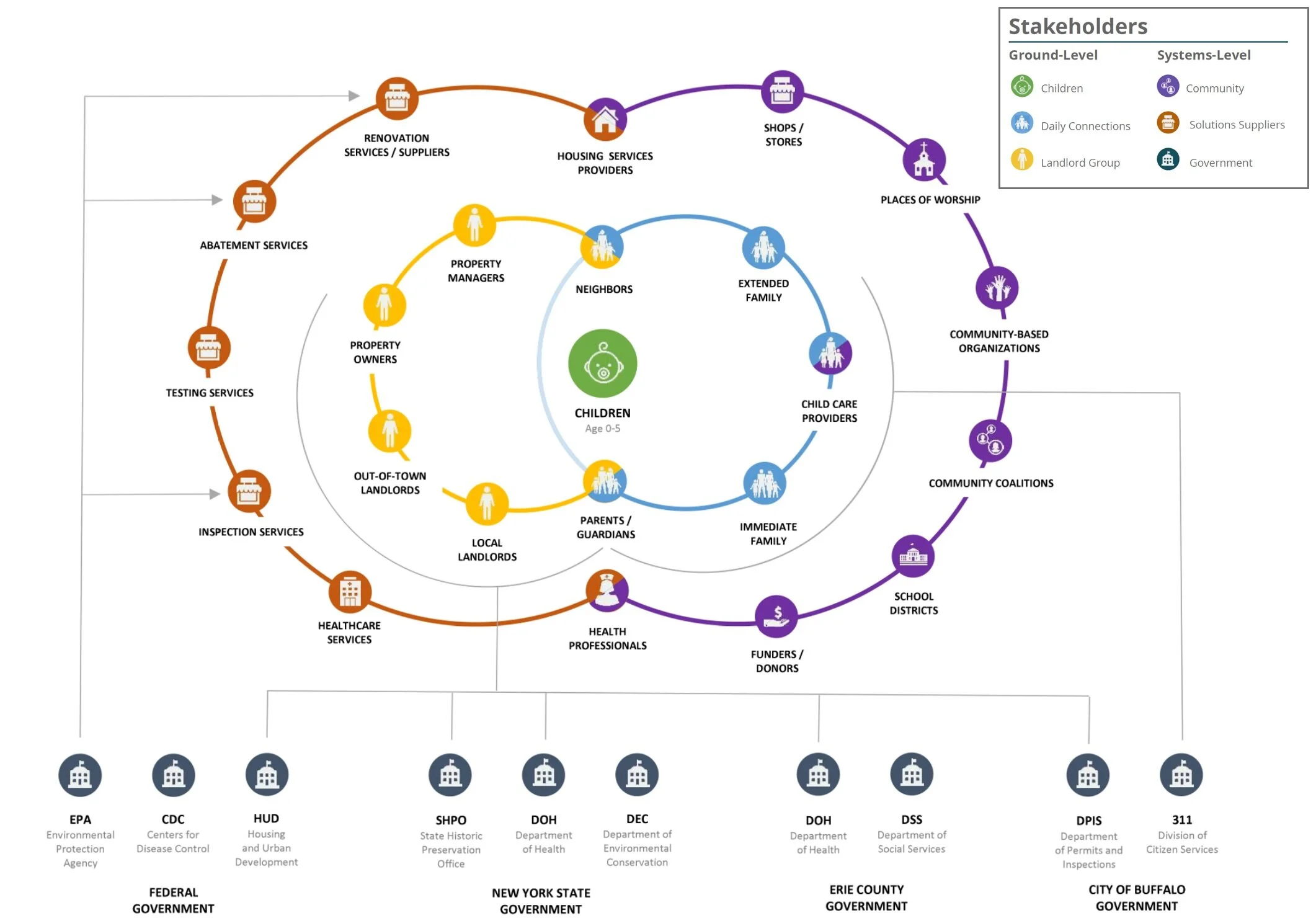Immersion & Observation
Have you ever used a product or service where you said to yourself: “The person who designed this must not have ever used it!”
By walking a mile in someone else’s shoes, so to speak, you can gain a deeper, more personal, and nuanced understanding of a particular challenge. In short, actually using a product or walking through a process is necessary if you are going to help build it better. Human-Centered Design works best when a designer can communicate with the people they are designing for through a lens of shared experience.
Immersion helps to inform our intuitions that are taken back to design and build solutions. It makes it easier to take on the perspective of the end user, which enables better design decisions with their perspective in mind.
Immersion and observation is a qualitative data collection technique that attempts to put you (the designer) in the place of a user. Immersion might involve going to a government office to sign up for a particular program, attempting to use a service to accomplish a task, spending a few days in a new place, or simply going on a shopping trip. The goal is to gain first-hand experience of whatever your ‘end users’ are trying to accomplish.
Immersion and observation can be a highly-impactful way to build a list of unmet needs and wants which can be translated into gradual, incremental improvements for the program, service, or product you are experiencing. Prioritizing our work by using the ‘end user’ experiences as a guide should lead to changes that make it easier for individuals to reach an end result, like avoiding lead poisoning or buying healthier foods for the family.
No matter what or who you are designing for, it is perhaps most important to meticulously document your experience. Creating a record of your experience and perspectives of the experience makes is easier to share and learn with other end users, stakeholders, and collaborators.
What are some ways to try Immersion and Observation?
Immersion is a research methodology where you attempt to put yourself in the place of a user — using a product, piece of software or system just as the user would. You essentially become a user and do this for an extended period of time using a clear set of tasks you complete (just as a user would) and
Start with a vision or problem statement that can help focus the type of experience you’d like to have.
Meet people where they live, work, and socialize by going to the places they live, work, and socialize.
Spend some time shadowing someone and ask them walk you through how they make decisions related to the challenge you are working on
Participate in daily activities like riding the bus, grocery shopping, moving through the work day, etc
Conversations with people you meet during an immersion activity can help shift your thinking from building for abstract users to building for real people.
If you are going to a new place, arrange to stay with a local family through homestays or Airbnb.
Google uses immersion trips to the field to learn about the end-user’s everyday experience. Their goal is to learn about cultural structures and day-to-day life so that they can build meaningful products. Everyone in the company is encouraged to go on immersion trips (engineers, product managers, marketing leads, vice presidents, etc)
Participant Observation: Method and Challenges
Immersion and observation are based on the use of participant observation, a research method commonly used in ethnographic studies in Anthropology and Sociology. Traditional participant observation often requires multi-year and highly-detailed explorations of why and how people think and behave the way they do.
Watch these two videos to learn more about participant observation and the challenges, pitfalls, and biases you should avoid when conducting your own, smaller-scale observations.
Morgan Scoville-Simonds shares an overview of participant observation and some of the potential pitfalls associated with the approach. https://www.youtube.com/watch?v=CK69jZyC19c
This video is part of a Coursera course, Human-Centered Design: an Introduction https://www.youtube.com/watch?v=PzW3awUwSlQ
Strategies & Tips for Success
Make your immersion and observation efforts more effective by keeping these strategies and tips in mind.
What people say (and think) they do and what they actually do are not always the same thing.
People often have strong beliefs about what they do on a daily basis that differs from what they actually do.
Do not try to correct or point out misperceptions - but seek to understand the difference through the use of questions
Deeper and longer-term immersion can build better relationships and trust.
Observe as much as you can and record exactly what you see and hear. It’s easy to interpret what’s in front of you before you’ve fully understood it, so be sure you’re
In your notes, write down concrete details and quotes alongside your impressions and interpretations
Pay close attention to a person’s surroundings and how they interact with them.
Don’t be afraid to take a note when you have a ‘eureka moment’ about something that could improve the user experience. If someone asks what you’re writing about, let them know about your idea and see if you can get some immediate feedback.
Make sure you read up on the context / environment before starting an immersion activities. Keep in mind local language, customs, clothing, and interactions.
Communicate your findings by summarizing your notes, sharing photos and/or videos, and committing to action steps that contribute to user-centered improvements.
Practical Activities & Learning
1) Review the stakeholder map (lead poisoning prevention ecosystem) to learn about the different individuals, organizations, and institutions working to prevent childhood lead poisoning.
2) Plan and engage in three (3) immersion and observation activities related to the actual work that tenants and landlords must do
In-the-Field Opportunities
As a neighborhood consultant, you can submit up to 10 field journal worksheets for project-relevant immersive experiences. Notes must be shared and summarized to enhance our learning.
Immersion & Observation Field Journal Worksheets available on request from aaron[at]akroadvice.com









